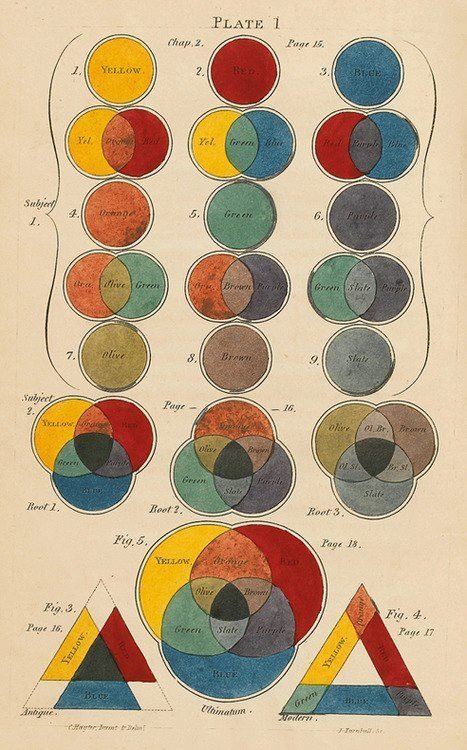 | ||
A tertiary color is a color made by mixing full saturation of one primary color with half saturation of another primary color and none of a third primary color, in a given color space such as RGB, CMYK (more modern) or RYB (traditional).
Contents
- RGB or CMY primary secondary and tertiary colors
- Traditional painting RYB
- Tertiary and quaternary color terms
- Comparison of RGB and RYB color wheels
- References
Tertiary colors have specific names, one set of names for the RGB color wheel and a different set for the RYB color wheel. These names are shown below.
Brown and grey colors can be made by mixing complementary colors.
RGB or CMY primary, secondary, and tertiary colors
The primary colors in an RGB color wheel are red, green, and blue, because these are the three additive colors—the primary colors of light. The secondary colors in an RGB color wheel are cyan, magenta, and yellow because these are the three subtractive colors—the primary colors of pigment.
The tertiary color names used in the descriptions of RGB (or equivalently CMYK) systems are shown below.
Traditional painting (RYB)
The primary colors in an RYB color wheel are red, yellow, and blue. The secondary colors — orange, green, and purple — are made by combining the primary colors
In the red–yellow–blue system as used in traditional painting and interior design, tertiary colors are typically named by combining the names of the adjacent primary and secondary.
Tertiary- and quaternary-color terms
The terms for the RYB tertiary colors are not set. For the six RYB hues intermediate between the RYB primary and secondary colors, the names amber/marigold (yellow–orange), vermilion/cinnabar (red–orange), magenta (red–purple), violet (blue–purple), teal/aqua (blue-green), and chartreuse/lime green (yellow–green) are commonly found. The names for the twelve quaternary colors are more variable, if they exist at all, though indigo and scarlet are standard for blue–violet and red–vermilion.
In another sense, a tertiary color is obtained by mixing secondary-colored pigments. These three colors are russet (orange–purple), slate (purple–green), and citron (green–orange), with the corresponding three quaternary colors plum (russet–slate), sage (slate–citron), buff (citron–russet) (with olive sometimes used for either slate or citron). Beyond that are shades of grey (blue grey and brown greys), which approach but never quite reach black.
The RYB color terminology outlined above and in the color samples shown below is ultimately derived from an 1835 book called "Chromatography", an analysis of the RYB color wheel by George Field, a chemist who specialized in pigments and dyes.
Comparison of RGB and RYB color wheels
Unlike the RGB (CMY) color wheel, the RYB color wheel has no scientific basis. The RYB color wheel was invented centuries before the 1890s, when it was found by experiment that magenta, yellow, and cyan are the primary colors of pigment, not red, yellow, and blue.
The RGB (CMY) color wheel has largely replaced the traditional RYB color wheel because it is possible to display much brighter and more saturated colors using the primary and secondary colors of the RGB (CMY) color wheel. In the terminology of color theory, RGB color space (CMY color space) has a much larger color gamut than RYB color space.
